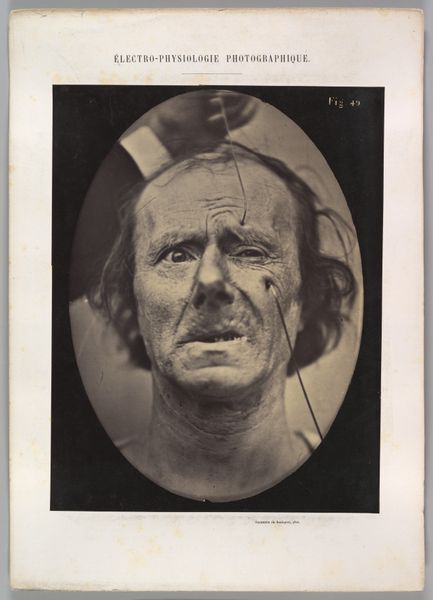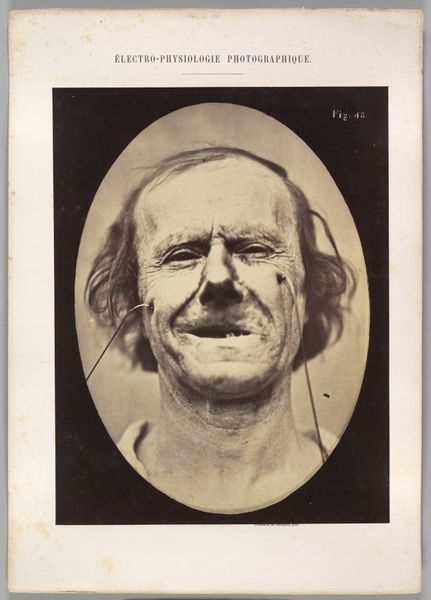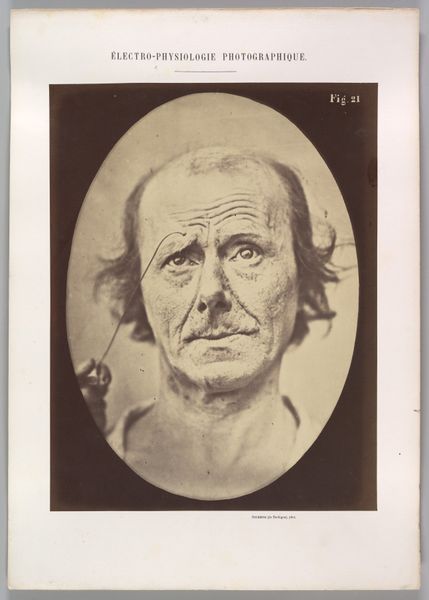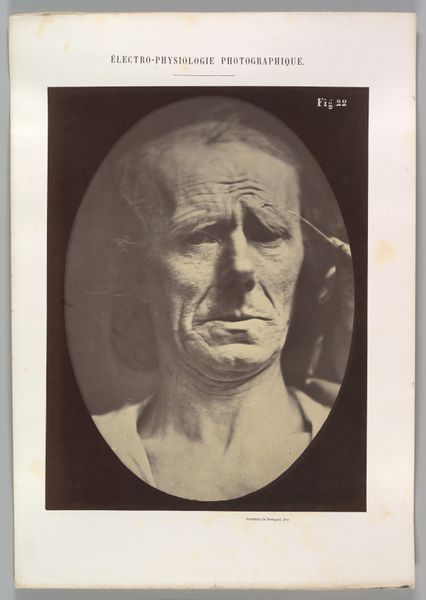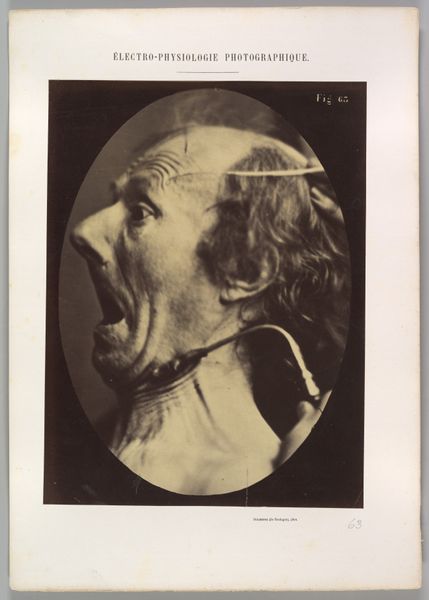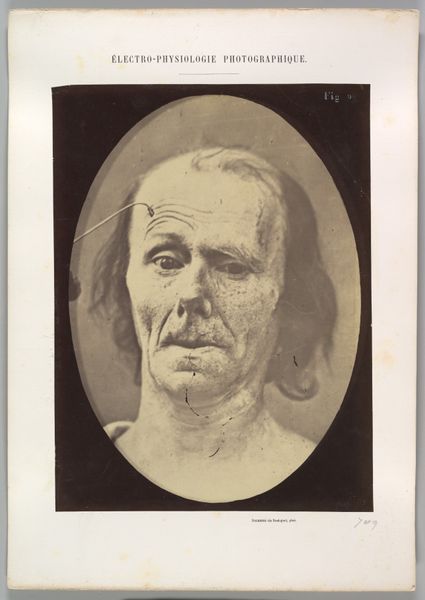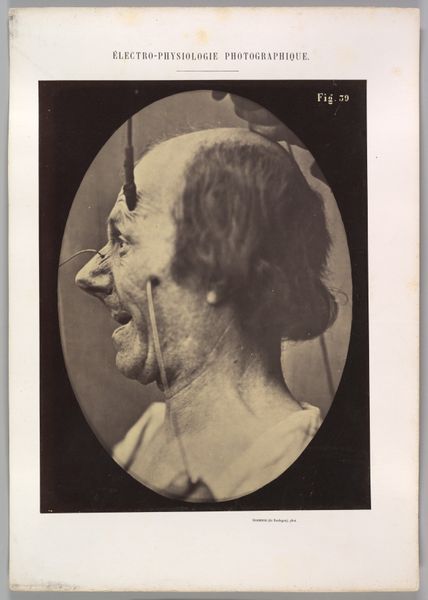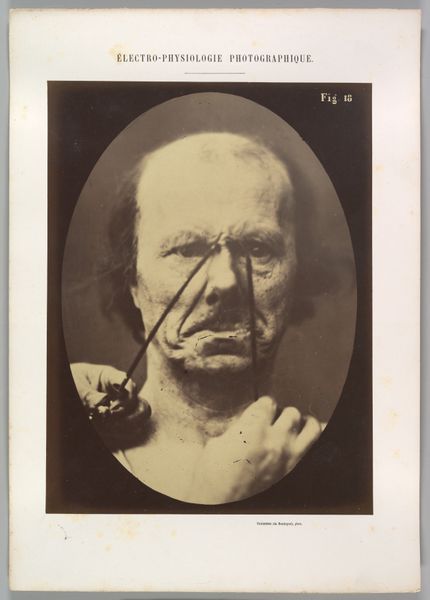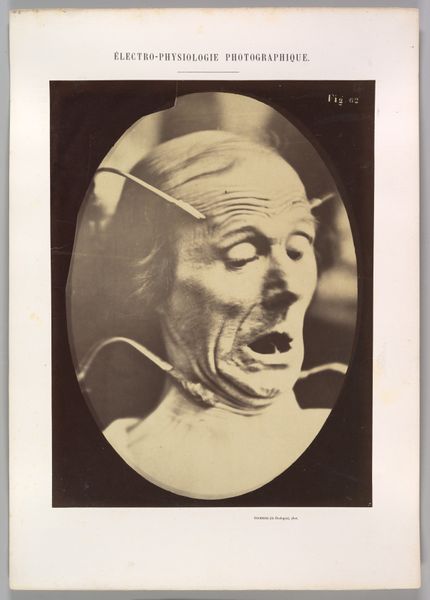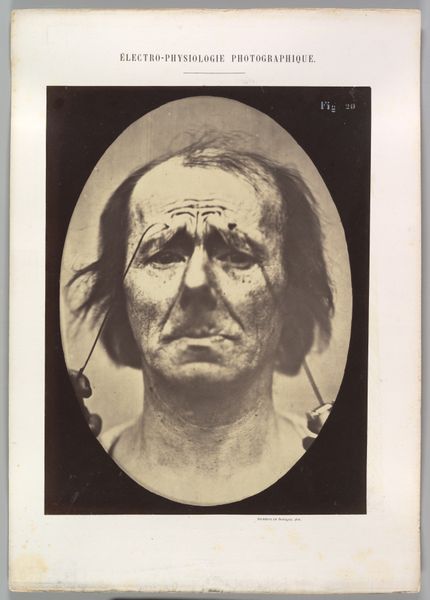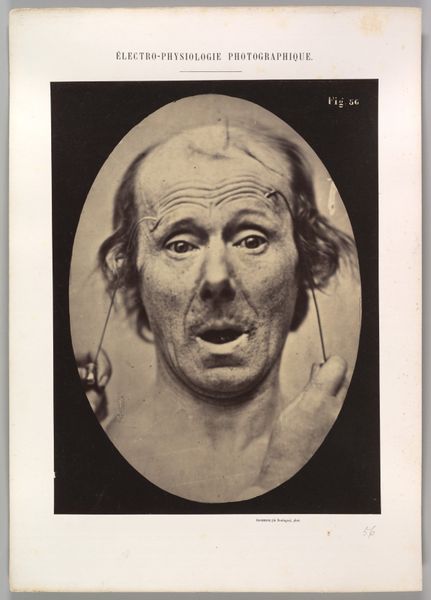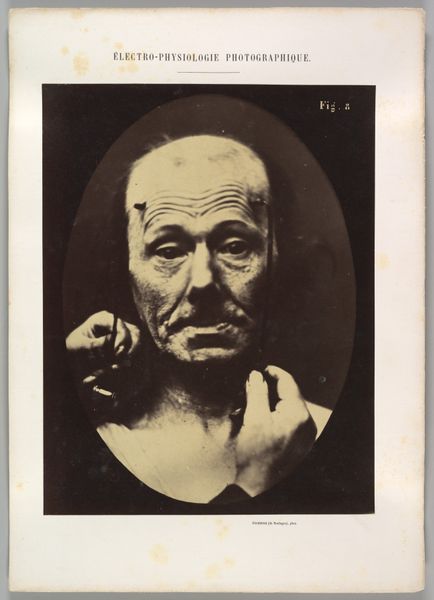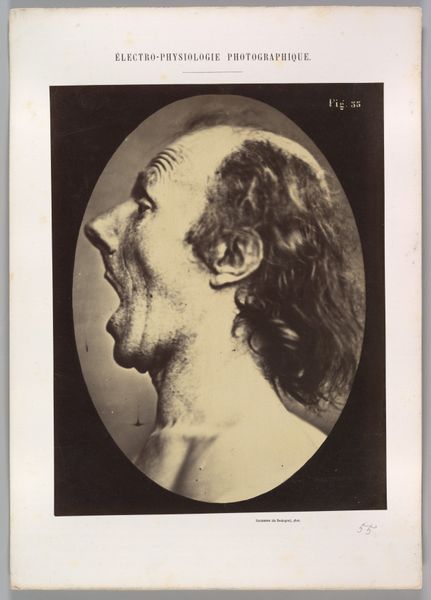
Dimensions: Image (Oval): 28.4 × 20.4 cm (11 3/16 × 8 1/16 in.) Sheet: 29.9 × 22.5 cm (11 3/4 × 8 7/8 in.) Mount: 40.2 × 28.5 cm (15 13/16 × 11 1/4 in.)
Copyright: Public Domain
Curator: What a wonderfully strange and slightly unnerving image this is. We’re looking at “Figure 34: Grimace,” a daguerreotype from around 1854-1856 by Guillaume Duchenne. It's part of a series, now housed here at the Met, exploring the physiology of expression. Editor: My gut reaction? Mildly horrified. It looks like a science experiment gone wrong – a man clearly not having a good time, hooked up to… are those electrodes? It’s fascinating, but also a bit disturbing to witness. Curator: Exactly. Duchenne was very interested in linking specific facial muscles to emotions, using electrical stimulation, as we see here, to induce certain expressions in his subject, often considered a patient of his. What you are seeing are the applicators, bringing electrical stimulation. Editor: So, it’s less about capturing a spontaneous moment, and more about deliberately constructing a feeling? That definitely shifts my perspective. It’s…manipulative, almost. Did he consider the ethics of this “experiment," I wonder. What were the social considerations for staging someone in that state? Curator: Ethical questions certainly arise. The scientific community was rapidly evolving then. Duchenne believed he was uncovering fundamental truths about human emotion. I see the grimace as reflecting back society’s attitude towards its social class and those perceived as feeble and outcast. Editor: True! And artistically, this blends scientific study with almost Romantic drama. The stark lighting, the intensity of the grimace…it’s theatrical. I almost think this image transcends mere clinical documentation and becomes something more evocative, albeit unsettling. I keep pondering its strange mix of scientific pursuit and unsettling visual impact. Curator: Well said. I'll now consider more acutely how the image captures so well the zeitgeist of science seeking, in this image, truth but at the cost of something less easily quantifiable such as personhood. Editor: Precisely, its like seeing the history and ethics of portraiture laid bare.
Comments
No comments
Be the first to comment and join the conversation on the ultimate creative platform.
